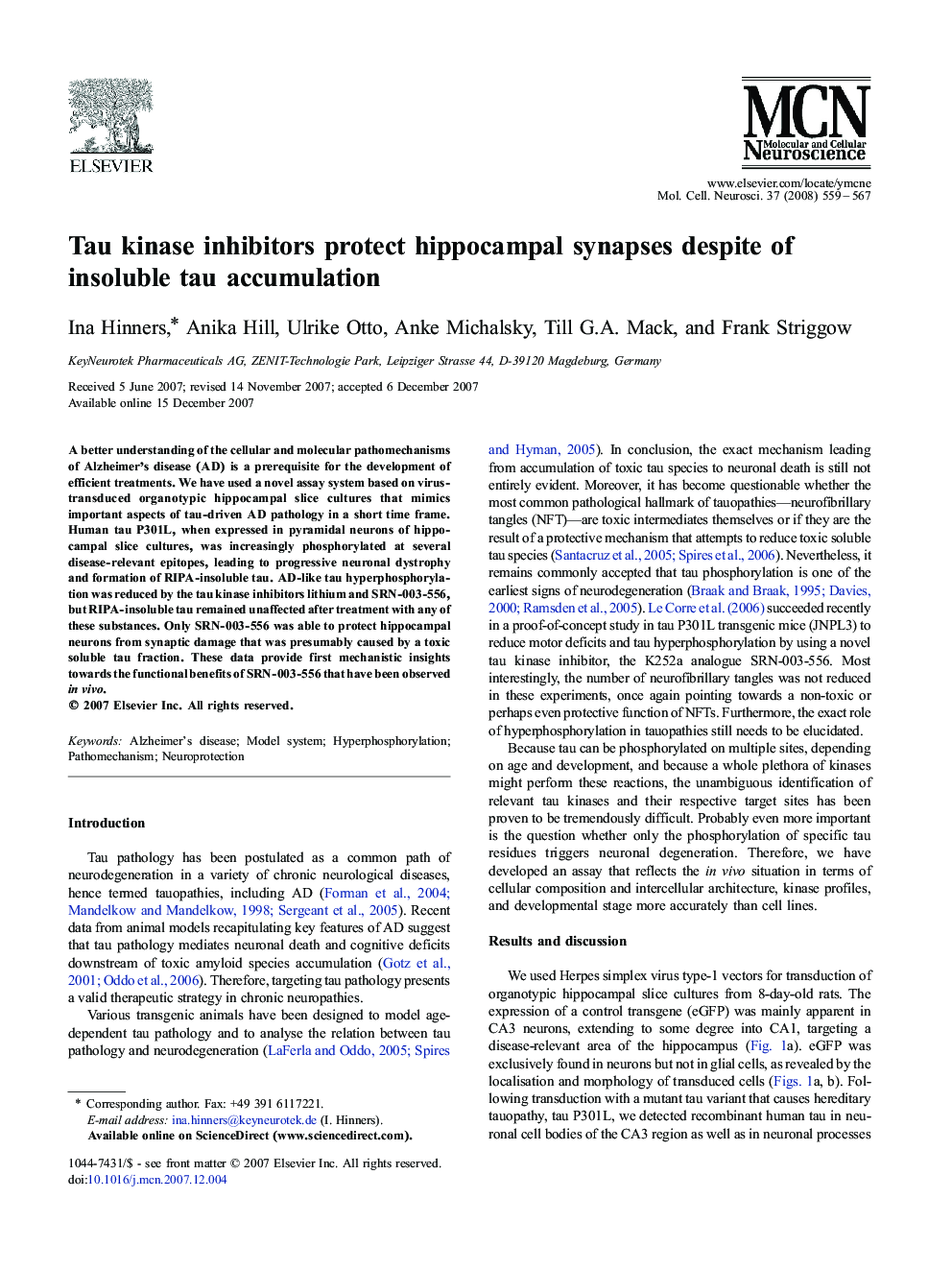| Article ID | Journal | Published Year | Pages | File Type |
|---|---|---|---|---|
| 2199249 | Molecular and Cellular Neuroscience | 2008 | 9 Pages |
A better understanding of the cellular and molecular pathomechanisms of Alzheimer's disease (AD) is a prerequisite for the development of efficient treatments. We have used a novel assay system based on virus-transduced organotypic hippocampal slice cultures that mimics important aspects of tau-driven AD pathology in a short time frame. Human tau P301L, when expressed in pyramidal neurons of hippocampal slice cultures, was increasingly phosphorylated at several disease-relevant epitopes, leading to progressive neuronal dystrophy and formation of RIPA-insoluble tau. AD-like tau hyperphosphorylation was reduced by the tau kinase inhibitors lithium and SRN-003-556, but RIPA-insoluble tau remained unaffected after treatment with any of these substances. Only SRN-003-556 was able to protect hippocampal neurons from synaptic damage that was presumably caused by a toxic soluble tau fraction. These data provide first mechanistic insights towards the functional benefits of SRN-003-556 that have been observed in vivo.
